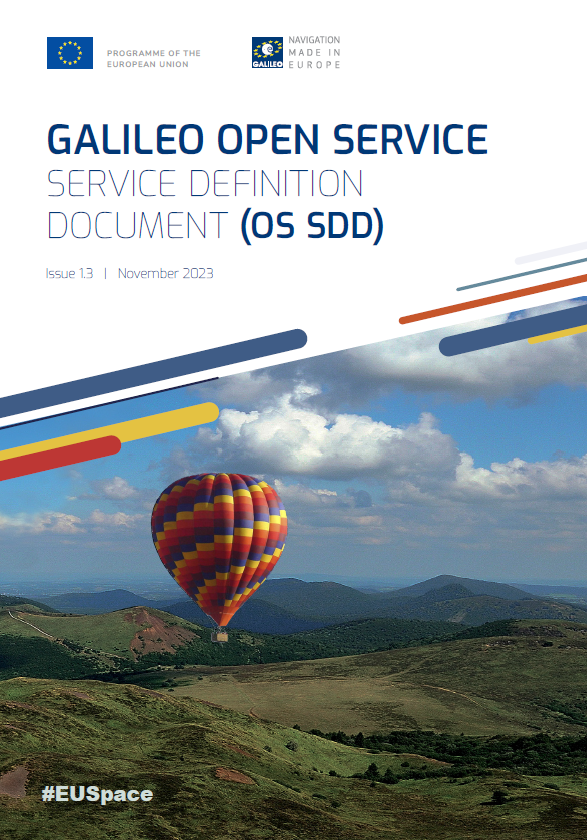An update of the Galileo Open Service Signal In Space Interface Control Document is now available. The main scope of this update is the inclusion of the improvements of the Open Service, accounting for the current constellation of operational satellites and updates in the ground infrastructure.
The “Galileo - Open Service - Service Definition Document” (Galileo OS SDD) defines the Minimum Performance Levels (MPLs) of the Galileo Open Service (OS).

The European Union Agency for the Space Programme (EUSPA) together with the European Commission announce the publication of the latest version of the Galileo Open Service Definition Document (OS SDD). The Galileo Open Service Definition Document (OS SDD) was updated1 on 2023-11-28 to reflect upgrades in the Galileo system and service since the publication of the previous version in November 2021. The latest version, 1.3, can be found on the GSC web portal.
The SDD has been updated to include improvements of the Open Service, accounting for the current constellation of operational satellites and updates in the ground infrastructure that increase its robustness. This update is yet another step towards the Galileo Open Service Full Operational Capability (FOC).
The updated SDD provides a better Minimum Performance Level (MPL) for the availability of the Galileo to GSP Time Offset (GGTO); establishes a more stringent commitment on the time to publish Notice Advisories to Galileo Users (NAGUs) in some situations; includes new parameters for which an MPL is provided (e.g., Positioning Accuracy, Range Rate Error, Ranging Accuracy at higher percentile, etc.). In addition, the concept of OS Extended Operation Mode has been introduced.
The Extended Operations Mode is a Galileo operational mode characterized by a gradually degrading accuracy with respect to the nominal operational mode, in case the Galileo OS navigation message generation function is interrupted for more than 24 hours. The mode allows for an OS with slowly decaying ranging accuracy for up to 6 days.
Finally, the updated OS SDD provides the typical performance achievable for selected parameter thanks to the improvements of the I/NAV navigation message that the Galileo constellation is broadcasting since August 2023. With these I/NAV improvements, Galileo enables for the users the possibility to considerably boost their performance in terms of robustness and Time To First Fix (TTFF).
Galileo Open Service Definition Document (OS SDD) at glance
As in previous versions, the main information in the SDD includes:
- Service terms and conditions of use.
- Service characteristics (scope, general concepts, assumptions, reference systems).
- Service performance (Minimum Performance Levels and their associated conditions and constraints).
- Annexes (providing further details on the parameters, expected performance evolutions, additional metrics and the description of NAGUs)
Users are invited to download and read the updated “Galileo Open Service Definition Document (SDD)” to discover the improvements of the Open Service and learn about its main characteristics and performance. For more details on Galileo performance and its services, please contact the Galileo Help Desk. Moreover, to receive NAGUs and notifications of new Galileo publications, please register to the GSC web portal and subscribe to our newsletters.
The Galileo OS SDD v1.3 document can be downloaded here.
Media note: This feature can be republished without charge provided the European Union Agency for the Space Programme (EUSPA) is acknowledged as the source at the top or the bottom of the story. You must request permission before you use any of the photographs on the site. If you republish, we would be grateful if you could link back to the EUSPA website (http://www.euspa.europa.eu).
1The OS SDD v1.2 is still available for the records on the following link.